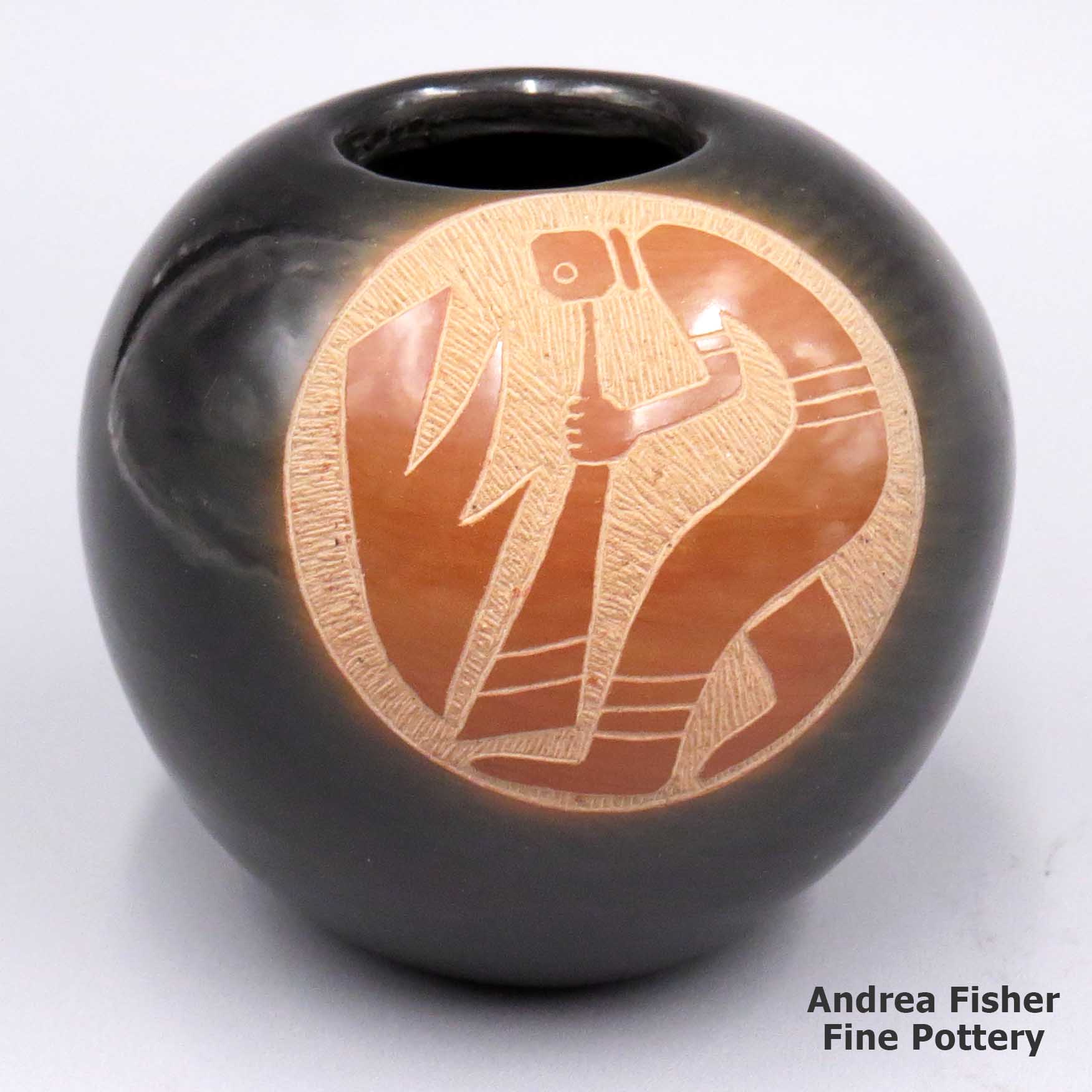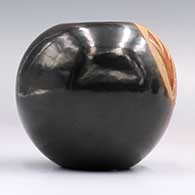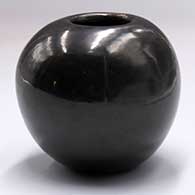
Mae Tapia
Santa Clara
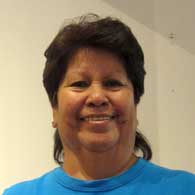
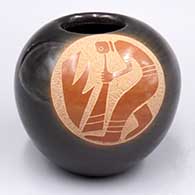
Mae Tapia was born to Joe and Santanita Suazo of Santa Clara Pueblo in 1952. She learned the traditional art of pottery making from her mother while growing up. She's been making pottery since she was 19 years old. Other potters in her family include sisters Candelaria Suazo, Margie Naranjo and Shirley Duran, her mother-in-law Belen Tapia, and her two children, Ira Tapia and April Tapia.
Mae has participated in the Eight Northern Pueblos Arts and Crafts Show and the Santa Fe Indian Market and she has earned First Place ribbons from both.
Her favorite shape is the seed pot and her favorite designs are based on ancient Mimbres designs. She tells us she gets her inspiration from her mother, her mother-in-law and from Martha Haungooah. She also says she has no plans when she puts her hands to the clay, she just lets the clay decide what she's going to make and it guides her every step of the way.
100 West San Francisco Street, Santa Fe, New Mexico 87501
(505) 986-1234 - www.andreafisherpottery.com - All Rights Reserved

Santa Clara Pueblo

Ruins at Puye Cliffs, Santa Clara Pueblo
Santa Clara Pueblo straddles the Rio Grande about 25 miles north of Santa Fe. Of all the pueblos, Santa Clara has the largest number of potters.
The ancestral roots of the Santa Clara people have been traced to the pueblos in the Mesa Verde region in southwestern Colorado. When that area began to get dry between about 1100 and 1300, some of the people migrated to the Chama River Valley and constructed Poshuouinge (about 3 miles south of what is now Abiquiu on the edge of the mesa above the Chama River). Eventually reaching two and three stories high with up to 700 rooms on the ground floor, Poshuouinge was inhabited from about 1375 to about 1475. Drought then again forced the people to move, some of them going to the area of Puye (on the eastern slopes of the Pajarito Plateau of the Jemez Mountains) and others to Ohkay Owingeh (San Juan Pueblo, along the Rio Grande). Beginning around 1580, drought forced the residents of the Puye area to relocate closer to the Rio Grande and they founded what we now know as Santa Clara Pueblo on the west bank of the river, between San Juan and San Ildefonso Pueblos.
In 1598 Spanish colonists from nearby Yunque (the seat of Spanish government near San Juan Pueblo) brought the first missionaries to Santa Clara. That led to the first mission church being built around 1622. However, the Santa Clarans chafed under the weight of Spanish rule like the other pueblos did and were in the forefront of the Pueblo Revolt of 1680. One pueblo resident, a mixed black and Tewa man named Domingo Naranjo, was one of the rebellion's ringleaders. When Don Diego de Vargas came back to the area in 1694, he found most of the Santa Clarans on top of nearby Black Mesa (with the people of San Ildefonso). An extended siege didn't subdue them so eventually, the two sides negotiated a treaty and the people returned to their pueblo. However, successive invasions and occupations by northern Europeans took their toll on the tribe over the next 250 years. The Spanish flu pandemic in 1918 almost wiped them out.
Today, Santa Clara Pueblo is home to as many as 2,600 people and they comprise probably the largest per capita number of artists of any North American tribe (estimates of the number of potters run as high as 1-in-4 residents).
Today's pottery from Santa Clara is typically either black or red. It is usually highly polished and designs might be deeply carved or etched ("sgraffito") into the pot's surface. The water serpent, ("avanyu"), is a traditional design motif of Santa Clara pottery. Another motif comes from the legend that a bear helped the people find water during a drought. The bear paw has appeared on their pottery ever since.
One of the reasons for the distinction this pueblo has received is because of the evolving artistry the potters have brought to the craft. Not only did this pueblo produce excellent black and redware, several notable innovations helped move pottery from the realm of utilitarian vessels into the domain of art. Different styles of polychrome redware emerged in the 1920's-1930's. In the early 1960's experiments with stone inlay, incising and double firing began. Modern potters have also extended the tradition with unusual shapes, slips and designs, illustrating what one Santa Clara potter said: "At Santa Clara, being non-traditional is the tradition." (This refers strictly to artistic expression; the method of creating pottery remains traditional).
Santa Clara Pueblo is home to a number of famous pottery families: Tafoya, Baca, Gutierrez, Naranjo, Suazo, Chavarria, Garcia, Vigil, Tapia - to name a few.
100 West San Francisco Street, Santa Fe, New Mexico 87501
(505) 986-1234 - www.andreafisherpottery.com - All Rights Reserved

Santa Clara
$ 495
zzsc2e095
Polished black jar with red sgraffito vignette featuring a low relief musician figure.
3 in L by 3 in W by 2.5 in H
Condition: Excellent
Signature: Mae Tapia (Yucca Hallmark) Santa Clara Pueblo
Date Created: 2022
100 West San Francisco Street, Santa Fe, New Mexico 87501
(505) 986-1234 - www.andreafisherpottery.com - All Rights Reserved

Santanita Suazo Family Tree
Disclaimer: This "family tree" is a best effort on our part to determine who the potters are in this family and arrange them in a generational order. The general information available is questionable so we have tried to show each of these diagrams to living members of each family to get their input and approval, too. This diagram is subject to change should we get better info.
- Shirley Duran & Joseph Duran (Tesuque)
- Aaron Duran (Tesuque, 1969-1994) & Tina Gasper (Zuni)
- Koty Duran (Tesuque, 1993-)
- Megan Duran
- Aaron Duran (Tesuque, 1969-1994) & Tina Gasper (Zuni)
- Martha Haungooah (-1981) & Art Cody aka Haungooah (Kiowa)(1943-1985)
- Dean Haungooah (1972-)
- Margie Naranjo
- Candelaria Suazo
- Mae Tapia (1952-2015) & Frank Tapia
- April Tapia & Joseph Gutierrez
- Ira Tapia & Morena Tapia
Santanita Suazo & Joe Suazo
(505) 986-1234 - www.andreafisherpottery.com - All Rights Reserved



